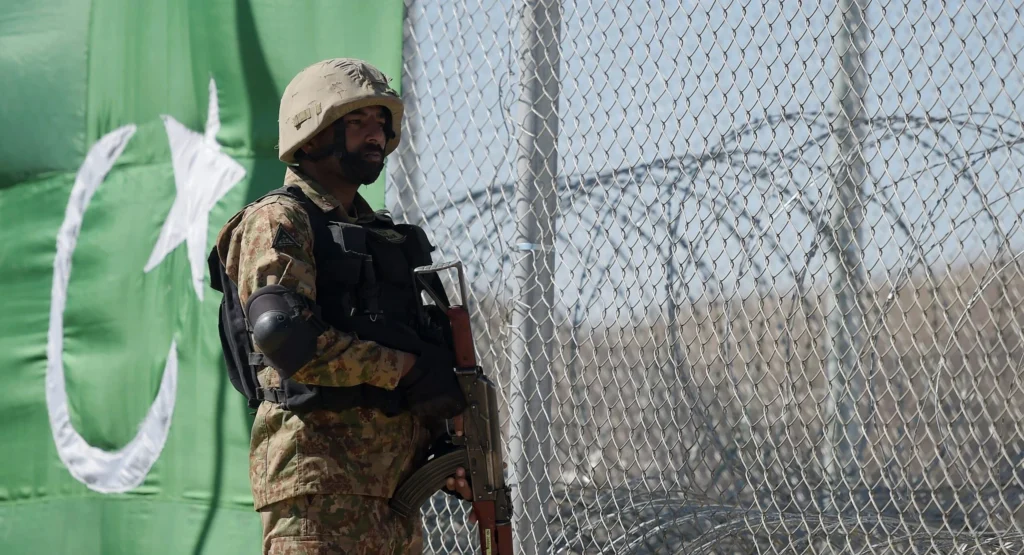The enduring myth that Pakistan’s counter-terrorism operations were merely a proxy war, executed at the behest of the United States, is a narrative that crumbles under the weight of an overwhelming body of evidence. The reality is that Pakistan was not a pawn on a foreign chessboard but a frontline survivor fighting for its very existence. Its military campaigns were a matter of national survival, not U.S. dictat, aligning with its own red lines and strategic autonomy.
The scale of the nation’s sacrifice proves this truth. While the U.S. eventually withdrew from Afghanistan, Pakistan remained, fighting a war that claimed over 70,000 Pakistani civilian lives and inflicted an economic cost exceeding $150 billion. No nation dictates such a staggering price to itself.
Sovereign Reaction to Domestic Crisis:
The claim that these were U.S.-dictated wars ignores the facts, the blood, and the sacrifices. The human and economic toll on Pakistan is the most powerful testament to its independent resolve. A UN report noted that Pakistan “bore the brunt” of the fallout from the U.S.-led war, and even U.S. officials have acknowledged Pakistan’s disproportionate sacrifices. As C. Christine Fair notes in Fighting to the End (2014), even critical voices concede that Pakistan’s operations were launched because of domestic security imperatives, not as extensions of U.S. policy.
Each major operation was triggered by domestic tragedies that crossed Pakistan’s red lines. In 2009, Operation Rah-e-Rast was launched after desperate pleas from Swat’s residents, who saw their schools destroyed and parallel courts imposed by militants. In 2014, Operation Zarb-e-Azb was initiated in response to the brazen terrorist attack on Karachi Airport, an assault that underscored the militants’ capacity to target the nation’s economic lifeline. Then came Radd-ul-Fasaad in 2017, born out of the national trauma of the Army Public School Peshawar massacre, where innocent children were brutally targeted. This heartbreaking event served as the pivotal catalyst for a full-scale offensive against militancy across Pakistan.
This was never America’s war transplanted into Pakistan. It was Pakistan’s war for Pakistan’s tomorrow, a sovereign struggle, a survival strategy, and ultimately, a story of national resilience. The success of these homegrown efforts is undeniable. According to the Pakistan Institute for Peace Studies (PIPS), suicide attacks dropped from over 60 in 2009 to under 5 by 2019, proving the efficacy of Pakistan’s operations. The return of international cricket to cities like Karachi and Lahore after 2015 symbolizes a nation reclaiming its normal life from the grip of terror. This was a victory for the Pakistani people, achieved on their own terms.
A National Consensus Beyond External Influence
The operational decisions were rooted in a rare and enduring civil-military consensus and were approved by the Pakistani Parliament, not the U.S. Congress. As Maleeha Lodhi’s edited volume Pakistan: Beyond the Crisis State (2011) underlines, this civil-military consensus was uniquely homegrown, reflecting Pakistan’s own societal and political compulsions. This community-backed approach, along with crucial grassroots support from local tribes, disproves any notion of a foreign-imposed campaign.
Pakistan’s defiance in the face of immense pressure is the clearest proof of strategic autonomy. The nation consistently refused U.S. demands for ground troops in Afghanistan and even rejected calls for U.S. direct bases after 2014. These are not the actions of a proxy state. The Pakistani military and intelligence agencies conducted highly specific, intelligence-led operations (IBOs) that were not part of any U.S.-coordinated plan, showcasing a high degree of independent operational capability.
The war on terror was also fought on ideological fronts. This was a struggle framed not just in geopolitical terms but as “Human Security.” Pakistan fought to protect its civilians, economy, and social fabric. Pakistan developed its own counter-narrative and de-radicalization programs, such as the Paigham-e-Pakistan initiative. This long-term, sophisticated approach was a national response to an evolving threat, demonstrating that Pakistan was engaged in a holistic war for its societal future, a strategy the U.S. often lacked. This multidimensional balancing act, considering its relationships with China, Saudi Arabia, and others, further proves that the strategy was Pakistan’s own.
The Paradox of Sacrificed Sanctuary:
The U.S. “do more” narrative fails to grasp the economic opportunity cost Pakistan endured. Beyond the direct monetary losses, the nation’s development was stalled, and foreign investment was diverted. The subsequent economic recovery, as noted by the World Bank, represents a reclamation of Pakistan’s economic future, a purely domestic motivation.
The most profound paradox of this conflict is that Pakistan’s own soil became a “sacrificed sanctuary,” a battleground for terrorists targeting its own people. The operations were a struggle to reclaim that sanctuary, to restore homes, and to bring back displaced citizens. The return of over 90% of IDPs to their homes after the clearing of FATA areas is the ultimate evidence of this successful, Pakistan-led rehabilitation effort.
Conclusion:
Unlike Washington, which pursued an “exit strategy” in Afghanistan, Pakistan pursued a “survival strategy” at home. It did not abandon the battlefield; it reclaimed its cities, rehabilitated millions of displaced citizens, revived its economy, and restored its social fabric. That price was not paid under compulsion but out of conviction. Pakistan’s counter-terrorism journey is not the tale of a proxy, but of a sovereign nation that chose resilience over retreat, sacrifice over submission, and survival over surrender. History will not remember Pakistan as a bystander in another’s war, but as a nation that bled to defend its tomorrow.



